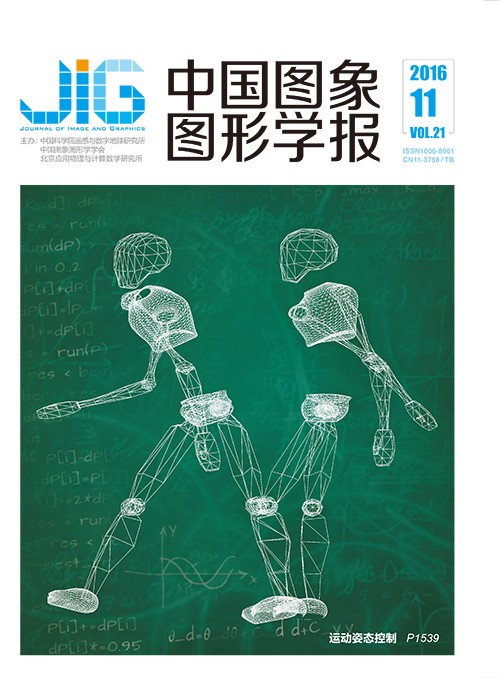
图像局部交互熵分割模型的两步快速优化
摘 要
目的 针对LCK(local correntropy-based K-means)模型收敛速度慢,提出新的基于LCK模型的两步快速分割模型。方法 两步快速分割模型包括粗分割和细分割。1)粗分割:先将待分割的原始图像下采样,减少数据量;然后使用LCK模型对采样后的粗尺度图像进行分割,得到粗分割结果及其相应的粗水平集函数。由于数据量的减少,粗分割步骤可以快速得到近似分割结果。2)细分割:在水平集函数光滑性约束下,将粗分割结果及其对应的粗水平集函数上采样到原始图像的尺度,然后将上采样后的粗水平集函数作为细分割的初始值,利用LCK模型对原始图像进行精细分割。因初始值与真实目标边界很接近,所以只需很少迭代次数就能得到最终分割结果。结果 采用F-score评价方法分析自然以及合成图像的分割结果,并与LCK模型作比较,新的模型F-score数值最大,且迭代次数不大于50。结论 粗分割步骤能在小数据量的情况下,快速分割出粗略的目标;细分割步骤在较好的初始值条件下,能够快速收敛到最终的分割结果,从而有效提高了模型的计算效率和精确性。本文算法主要适用于分割含有未知噪声及灰度非同质的医学图像,且分割效率高。
关键词
Fast two-stageimage segmentation based on local correntropy-based K-means model
Song Yangyang, Liu Yingzhou, Xie Xiaozhen, Hao Zhihui(School of Sciences, Northwest A & F University, Yangling 712100, China) Abstract
Objective Real-world images are often distorted by unknown noise and intensity inhomogeneity, thereby making segmentation a challenging task. The local correntropy-based K-means (LCK) model shows significant improvements on images with unknown noise and uneven gray distribution. However, the segmentation results are sensitive to the initial contour, and the speed of the segmentation convergence is slow. To solve these problems, this paper presents a new two-stage segmentation model based on LCK model. Method The new model is a combination of two stages, and each stage is based on LCK model. In the first step, the convolution result of image information and Gauss kernel was down-sampled, and the down-sampled result was segmented based on LCK model resulting on coarse segmentation results and coarse level set functions accordingly. The down-sampling of the original image resulted in a coarse scale image, which could reduce data size. With the benefit of data size reduction, the down-sampled image could be rapidly segmented to an approximate result. Compared with direct down-sampling operation, down-sampling with convolution of the image information and Gauss kernel lost lesser information and could calculate local weighted average. Therefore, the gray image value was suitable. In the second step, with the smoothness constraints of level set functions, the coarse segmentation results and according coarse level set functions were up-sampled to the original image scale. The coarse level set functions of up-sampling were then used as initial value of explicit segmentation based on the LCK model. Given that the initial value was a close approximate of the object boundary, less iteration was needed to obtain results. Result The proposed model could provide improved contour, which was close to the object boundary for LCK model. The results of segmentation of synthetic image show that, compared with LCK model, the proposed model converged faster and was more accurate. By utilizing F-score value as an evaluation criterion, the proposed model obtained higher values than the LCK model. In addition, when images were intensity inhomogeneous or distorted by different noises, the proposed model could secure improved results with iterations of less than 50, whereas iterates of the LCK model could reach at least 1000. The proposed model was more robust than the LCK model on natural and synthetic images with complex noises. Conclusion A fast and accurate segmentation based on LCK model is proposed. Based on the feature of down-sampling, the processing time is reduced without losing much information. The proposed model combines down-sampling with Gauss kernel to reserve much image information. To avoid the sensitivity of LCK model to the initial contour, the coarse segmentation provides an initial contour close to real object boundary. The proposed algorithm can rapidly segment an image with unknown complex noise.
Keywords
|



 中国图象图形学报 │ 京ICP备05080539号-4 │ 本系统由
中国图象图形学报 │ 京ICP备05080539号-4 │ 本系统由